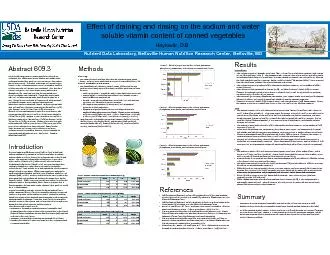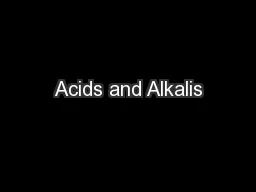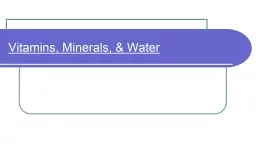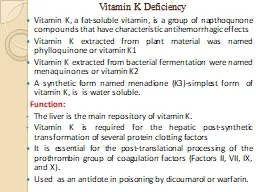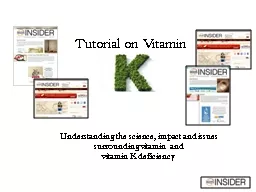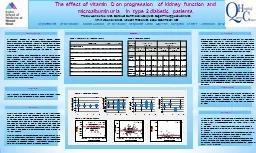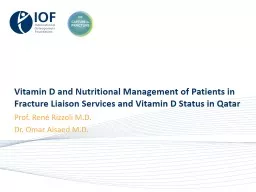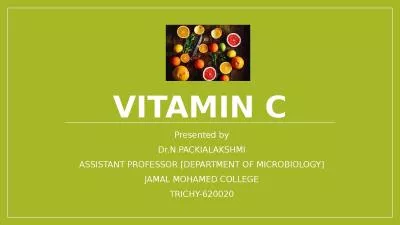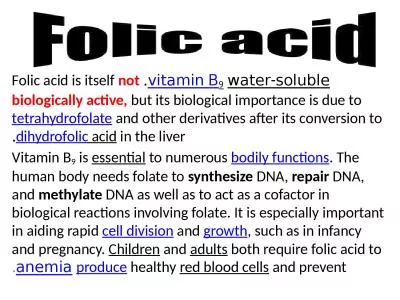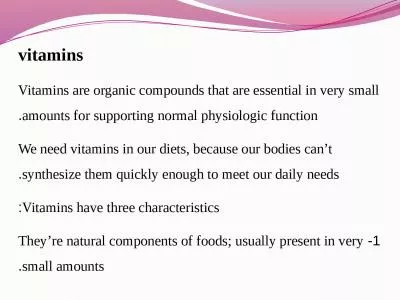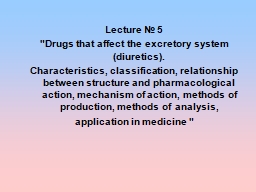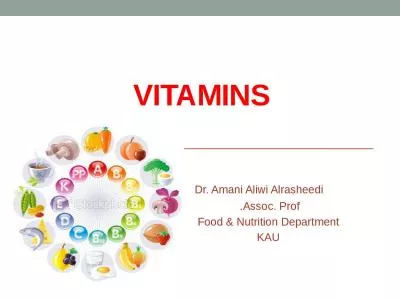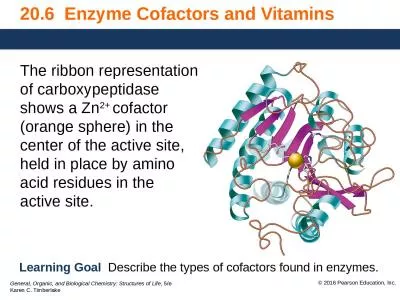PDF-Effect of draining and rinsing on the sodium and water soluble vitamin
Author : sherrill-nordquist | Published Date : 2015-10-13
Haytowitz DB Nutrient Data Laborator y Beltsville Human Nutrition Research Center Beltsville MDPublic health advocates are urging people to reduce their sodium
Presentation Embed Code
Download Presentation
Download Presentation The PPT/PDF document "Effect of draining and rinsing on the so..." is the property of its rightful owner. Permission is granted to download and print the materials on this website for personal, non-commercial use only, and to display it on your personal computer provided you do not modify the materials and that you retain all copyright notices contained in the materials. By downloading content from our website, you accept the terms of this agreement.
Effect of draining and rinsing on the sodium and water soluble vitamin: Transcript
Download Rules Of Document
"Effect of draining and rinsing on the sodium and water soluble vitamin"The content belongs to its owner. You may download and print it for personal use, without modification, and keep all copyright notices. By downloading, you agree to these terms.
Related Documents

